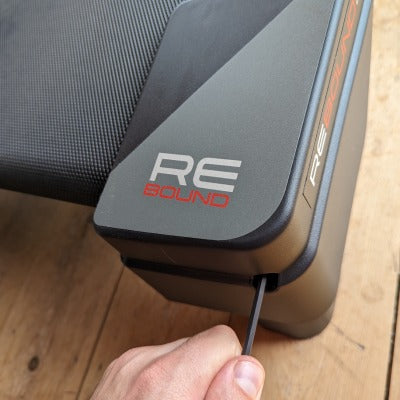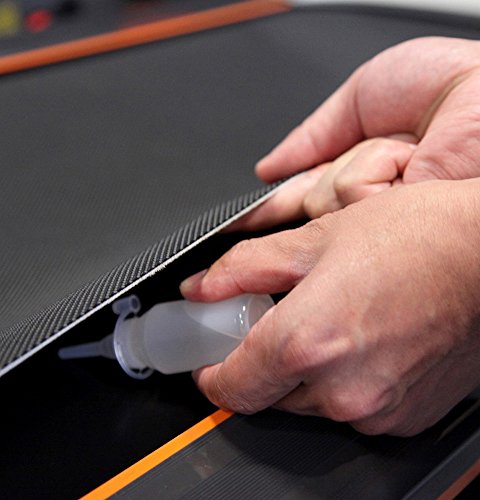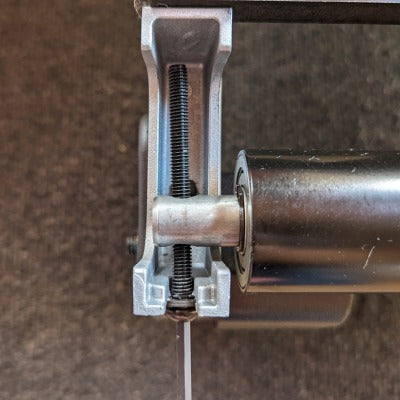If you spent a considerable amount of money on a high-quality home treadmill, it would be a real shame if you let it break down.
Sure, treadmills are just like any other piece of equipment in the sense that they suffer from general wear and tear over time.
However, how well you maintain your treadmill can make the difference between it lasting for two years or twenty years.
Many people might not realise just how important regular treadmill maintenance is, which is exactly what we are here to address today.
This is your complete treadmill maintenance guide that will provide you with all of the info you need to keep your home treadmill in prime condition for years to come.

Why Do Treadmills Require Regular Maintenance?
Interestingly enough, treadmills need more regular maintenance than virtually all other pieces of exercise equipment out there.
The reason for this is quite simple, there are more moving parts than most other pieces of equipment such as the running belt that is constantly rubbing against the deck.
If you don't maintain a clean belt and deck, debris can build up over time. This can lead to the treadmill experiencing too much friction, heat building up, and eventually something tearing or breaking.
The belt and deck are just some of the components that require maintenance here.
As is the case with complex pieces of equipment, there are many moving parts, hardware, and electrical components that can break down over time, particularly without maintenance.
You might think that one small component being broken isn’t necessarily a big deal, but issues with such complex machines often snowball and become worse much faster.
It starts with a slightly dirty treadmill belt and quickly leads to the motor burning out because it has to work too hard to move the belt.
At the very least, if you don’t clean your treadmill regularly, debris can build up on it, cause it to become sticky, and just make it unenjoyable to use.
Nobody wants to use a dirty, sticky, smelly, and sweat-covered treadmill!
Related: Best Treadmills - Top 7 Picks
What Type of Maintenance to Treadmills Require?
There are various types of maintenance that your average treadmill should undergo on a regular basis.
General Inspections
First, you should perform a general inspection on a regular basis just to see if there are any damaged components. Anything broken should be repaired or replaced right away by a trained professional, to prevent further damage from occurring.
Cleaning

Another type of maintenance that every treadmill needs is basic cleaning. You sweat all over these things and walk on them with your shoes.
Having a treadmill get dirty is inevitable, but you do need to clean it. The display requires regular cleaning, or else sweat and dirt may damage it and cause it to lose functionality over time.
The belt and deck need cleaning as well, especially to prevent friction.
Lubricating
Perhaps the most important type of maintenance you need to perform on a treadmill is lubrication.
If you don’t keep the belt and deck well-lubricated, it will cause friction between them. This in itself can cause many different problems, with slower and rougher movement, overheating, the motor burning out, and damage to the belt all being possible.
Adjusting Tension
 The other type of regular maintenance that every treadmill needs is tension adjustment.
The other type of regular maintenance that every treadmill needs is tension adjustment.
The belt on a treadmill, if used often, will start to loosen, which is bad for several reasons. If the tension is not as high as it should be, it will cause friction and can cause damage to the deck and motor.
Related: Adjusting a treadmill belt
How Often Should You Maintain Your Treadmill?
How often you should maintain your treadmill is another question that so many people have.
As a rule of thumb, it is recommended that you inspect and thoroughly maintain your treadmill every 125 miles (200 km) or every three months, whichever comes first (full inspection, cleaning, and repair).
To be more specific, general cleaning of sweat should be done after every use, and you should do a more thorough cleaning once every week or two at most, depending on how much you use the treadmill.
If you use the treadmill on a daily or near-daily basis, you should lubricate it once every three months, or once every six months if you only use it up to three times per week.
However, to make sure that you don’t miss anything, just take a look at it once per week to see if you notice any damaged parts.
As for tension adjustments, these should be done as often as needed. If you feel that the tension is no longer ideal, then it is time to do something about it.
Steps to Maintain Your Treadmill: A Complete Guide
Let’s go through a quick step-by-step guide on how to maintain a treadmill.
Step 1: Inspect the Treadmill for Issues
Inspect your treadmill for damage and usage issues. Turn it on and cycle through all of the settings to see if everything works fine.
Check to see if the frame nuts and bolts are tight, that the belt is centred and straight, and that no other components are damaged. If you see damage or issues, you will need to take care of them. Here are some common issues your treadmill may face.
- If you notice that there are loose nuts or bolts, make sure that they are in good condition and then tighten them.
- If there is a burning smell, unplug it and stop using it. It may be caused by dust in the motor, a short circuit, or an object stuck under the belt. You’ll need to take the appropriate steps to fix the root cause of the problem.
- If the display is not working, check the power cord or batteries. If wires or cords are damaged, they will need to be replaced by a trained professional. This is the case for all wires, not just those for the display.
- If you notice that the belt is warped, torn, or otherwise damaged, it will need to be replaced as well.
Step 2: Clean the Treadmill
Once you have made necessary repairs and replacements, or you’ve found that everything is in working order, it’s time to clean the treadmill.
A rag, cloth, or paper towel along with some hot water, a gentle soap, or an appropriate disinfectant will do just fine.
Clean the belt to ensure that there is no debris present, wipe down the railings and handles, and clean the display to remove any sticky areas.
At this point, you may also want to lift up the belt and clean out the area between it and the deck, just to ensure that there is no debris present.
If you are satisfied that the treadmill is clean and free of debris, you can move on to the next step.

Step 3: Lubricate the Deck
You need to keep the belt and deck lubricated to prevent friction from occurring. An unlubricated belt can cause a whole host of issues.
See our guide on how to lubricate a treadmill belt for more detailed steps.
A quick guide is to loosen the bolts on the back of your treadmill to loosen the belt, so you can lift it up.
Take a silicone lubricant spray (or the specific type of lubricant as recommended by the manufacturer) and spray it on top of the running deck (between the belt and the deck).
Make sure to clean underneath first though. You don’t want to spray a bunch of lubricant onto a dirty deck, as that will just cause further problems.
Step 4: Adjust the Tension
 Those same bolts that you just used to loosen the belt then need to be retightened to the appropriate tension level.
Those same bolts that you just used to loosen the belt then need to be retightened to the appropriate tension level.
If you clean and lubricate between the deck and belt, you’ll need to do this regardless of when you retighten those bolts.
There is no set limit here, and you may need to refer to the owner's manual for the manufacturer's recommendation.
Generally, it should be tighten enough that you can only lift the belt up about 2 inches in the middle of the running deck.
Step 5: Take Preventative and Protective Measures
Finally, here are some tips in terms of preventative measures you can take to keep your treadmill in as good a condition for as long as possible.
- Always keep the treadmill on a level surface. This will help keep the belt aligned.
- Plug the treadmill into an outlet with a surge protector, to protect it from electrical damage. Also, the extension cord should be no longer than 5ft and should be a 3-conductor, 14 gauge cord. Otherwise
- Put a treadmill mat under the unit to minimize vibration, and therefore damage.
- Always wear appropriate footwear on a treadmill.
- Clean up any spills or debris immediately.
Final Thoughts
As you can see, although there is a fair amount of work that goes into maintaining a treadmill, it’s more than worth it considering how expensive they are and how long they can potentially last for.
Related Post:





